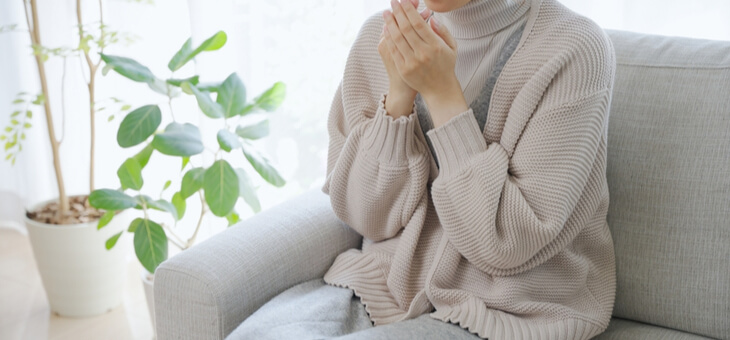As we move through May and head towards winter, thoughts of cold nights, hot water bottles and electric blankets fill our heads – at least for those of us in the southern states.
Some of us, of course, may have central or hydronic heating, and won’t need to try to remember where we put that hot water bottle last spring.
For many though, it’s not a time for flippant thoughts. A report reveals that cold weather in South Australia is associated with more than 600 extra deaths every year.
Read: Are you always cold? It might not be just in your head
One of the causes, the report says, is poor quality homes. Ironically, it may be Australia’s generally warmer climes that are responsible for cold-related deaths in winter. Many houses are built with our iconic heat in mind rather than the coldest months.
The report, titled The sick season: cold weather and mortality in South Australia, found that more than 150 extra deaths occurred in each cold month compared with the rest of the year.
Joel Dignam, executive director of renter advocacy group Better Renting, says that despite the fact Australia experienced milder winters compared to other places around the world, the way most homes are built make them less resilient when the temperature drops.
Read: How to stay safe during extreme weather
The report concludes: “Across the world, countries with milder climates tend to build dwellings with poorer thermal performance. This results in more seasonal variation in death rates, with peaks occurring in winter months. This is the pattern we see in South Australia, with monthly deaths peaking in July/August. This results in around 620 excess deaths each year.”
That conclusion is supported by data collected by the University of Adelaide’s Dr Lyrian Daniel, who, with her colleagues, has conducted thermal monitoring of Adelaide homes during winter since 2017 to provide objective evidence of the living conditions.
Dr Daniel’s team found stark results in 2017: “Very few of the houses within our sample recorded an average daily temperature above 18 degrees, which is the minimum safe temperature for homes recommended by the World Health Organization, during the cold months.”
Dr Daniel’s results and the Better Renting report are focused on Adelaide and South Australia, but by extrapolation it would be reasonable to assume that similar, if not worse, issues would confront renters in cities further south such as Melbourne and Hobart, where the average overnight minimum is lower than Adelaide’s.
Read: Omicron COVID-19 winter wave expected to hit supply chains
One unexpected observation the report noted was that the data showed an above-average rate of deaths in October. “While this may seem surprising”, the report states, “it is consistent with how cold affects the human body. That is, the health effects of cold are cumulative –they accrue over time from continuous exposure to cold.”
While homeowners may be in a position to improve design elements to make their houses warmer and more energy efficient when required, for renters the process can be fraught.
Mark Henley, from South Australian not-for-profit organisation Uniting Communities, says: “Sadly, many renters are reluctant to approach their landlord for fear of eviction or a rent increase.”
He is seeking minimum energy efficiency standards for rental housing. “We all benefit when people in our community can afford to have a healthy home,” he says.
If you enjoy our content, don’t keep it to yourself. Share our free eNews with your friends and encourage them to sign up.

